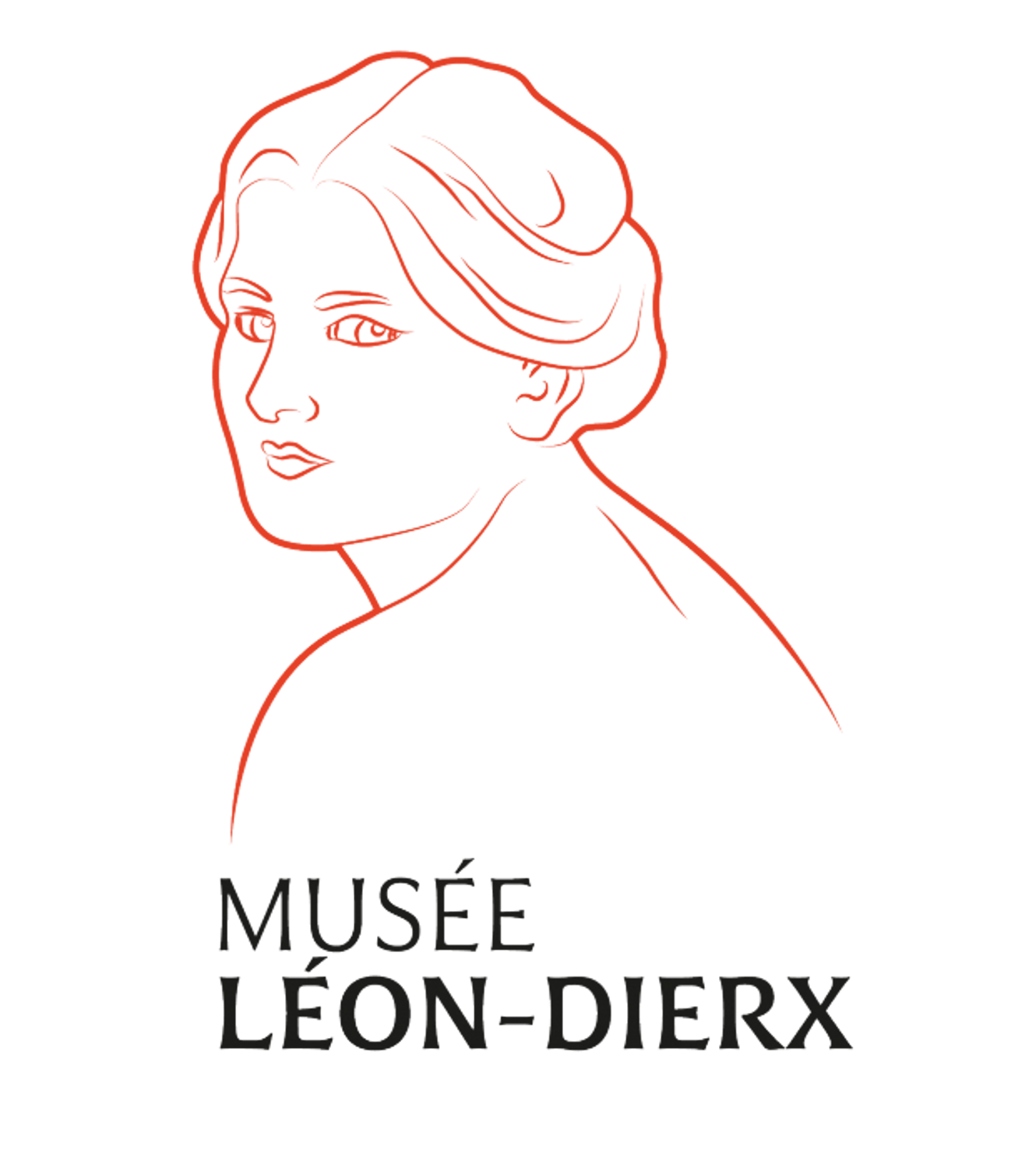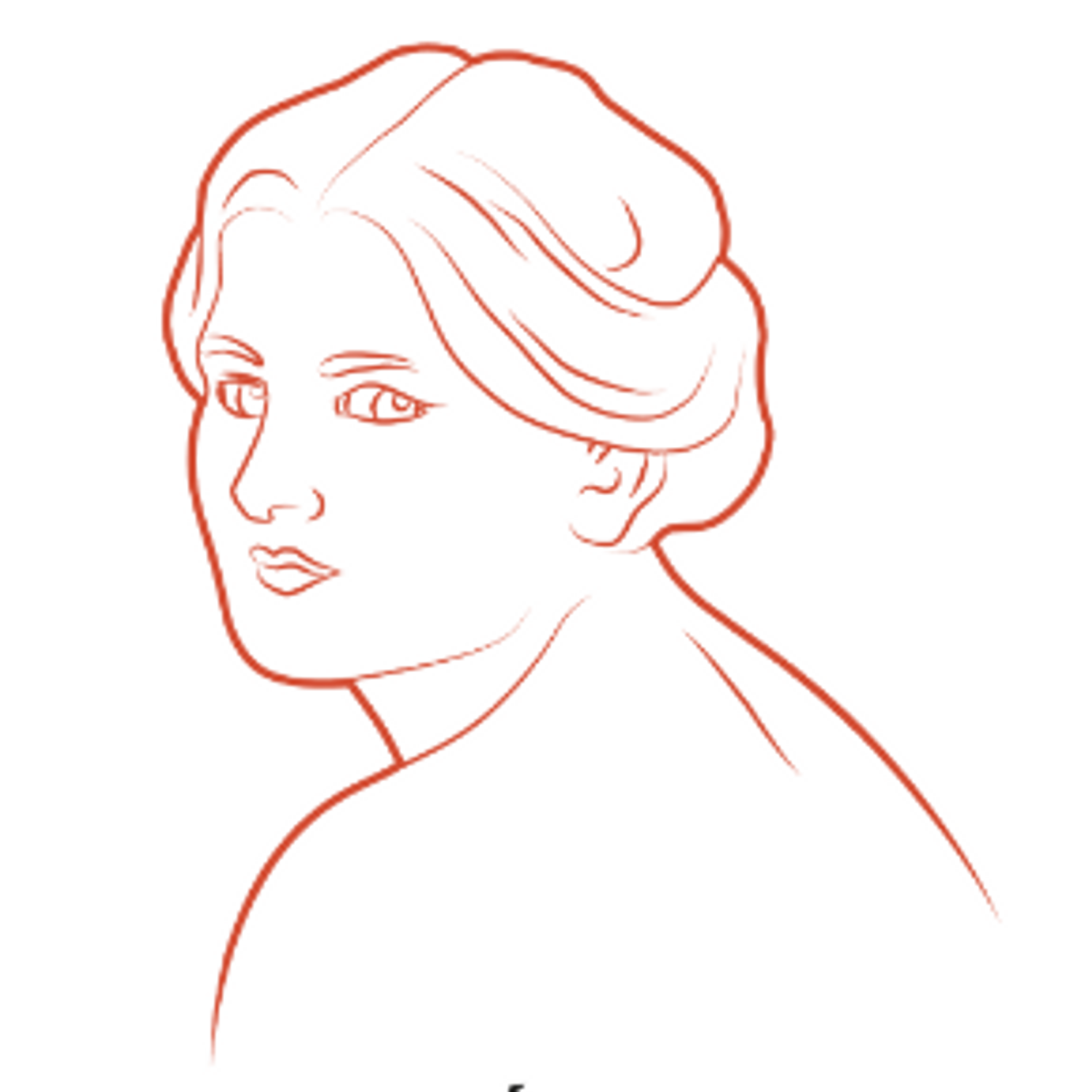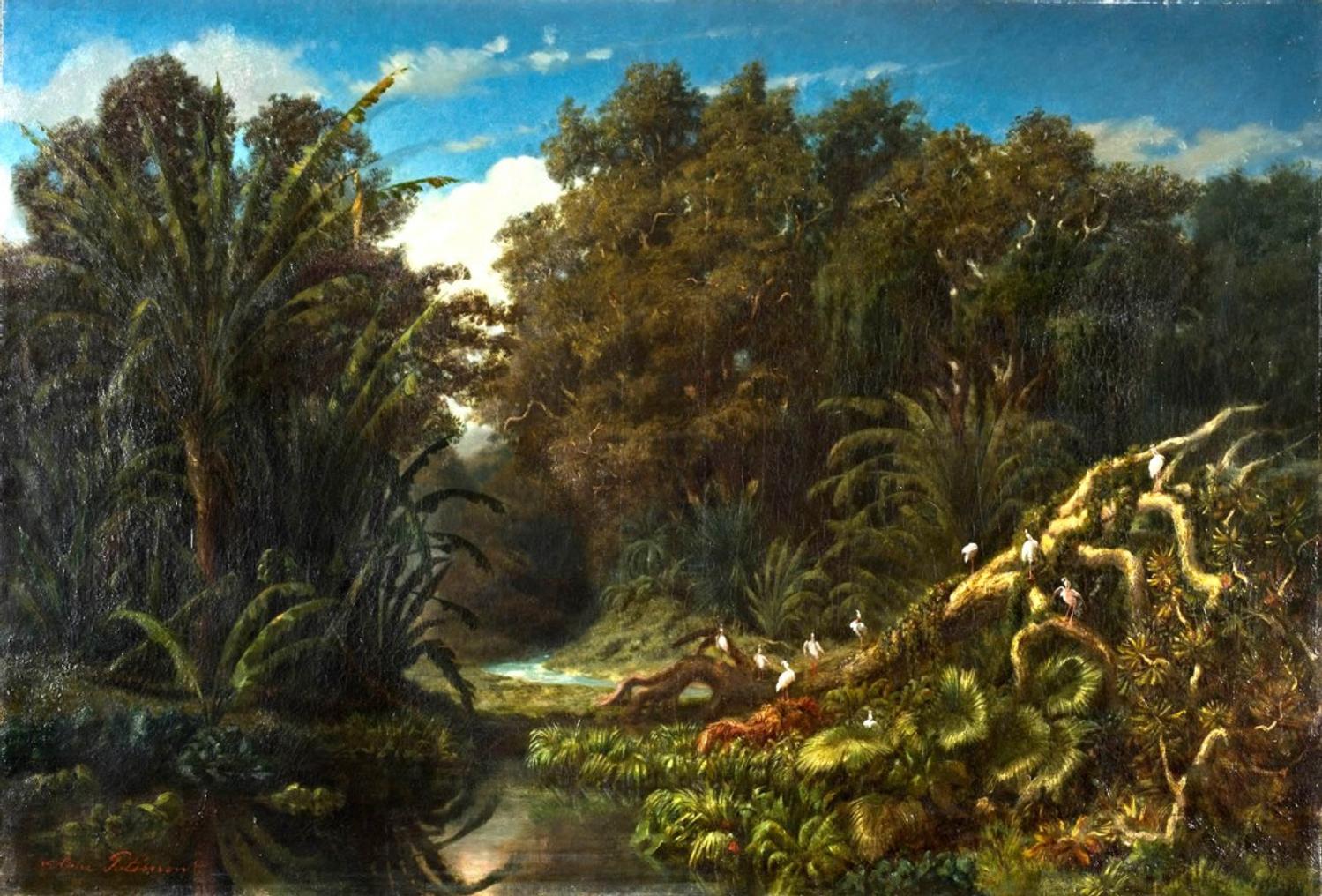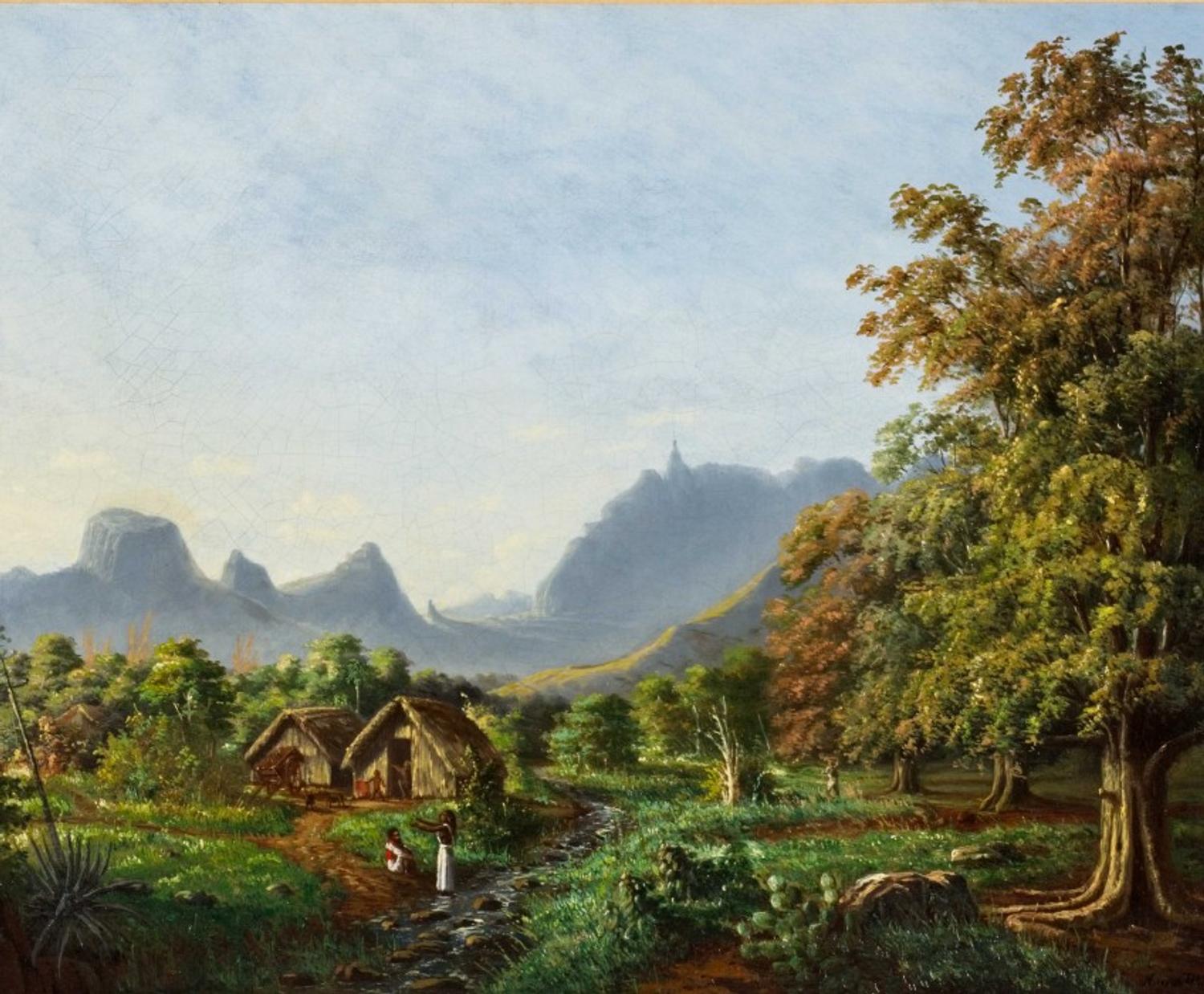LANDSCAPE PAINTING IN THE INDIAN OCEAN ISLANDS DURING THE 19TH CENTURY
Au XIXe siècle, la présence d’artistes européens dans les îles du sud-ouest de l’océan Indien contribue au développement de la peinture de paysages exotiques en lien avec ces régions du monde, alors peu connues en Europe.
Parmi eux, il convient de distinguer les œuvres de Charles Merme et d’Adolphe Martial Potémont. Tous deux résident à l’île de La Réunion à la fin des années 1840 et au début des années 1850. Cette île est le point de départ de visites à Madagascar, à Mayotte mais aussi à l’île Maurice.
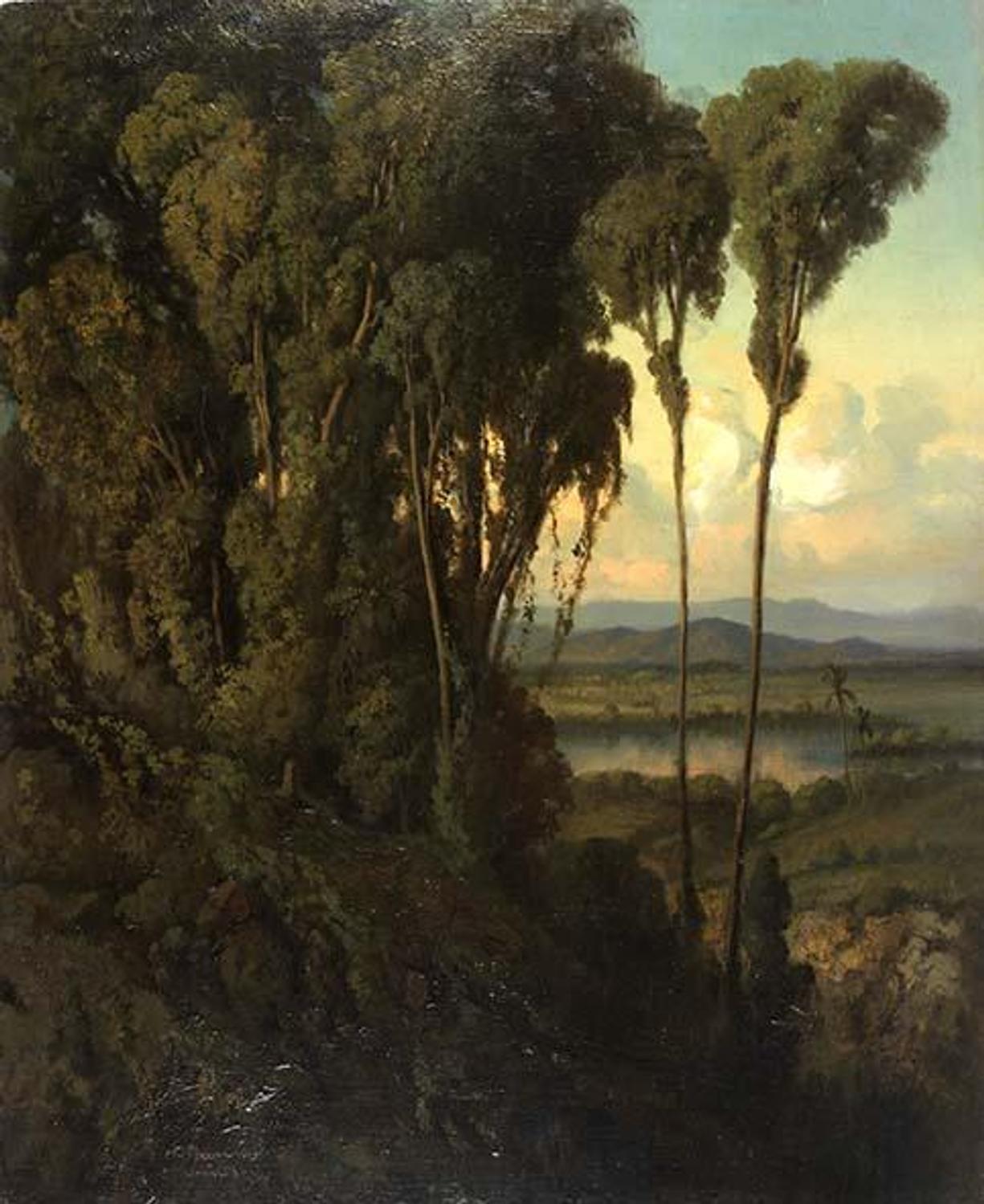
Charles Merme, Paysage à Madagascar, 1848
Charles Merme (1818-1869)
Born in Cherbourg, Charles Merme, a pupil of the orientalist painter Prosper Marilhat, had a military career as squadron leader in the French naval artillery regiment. He thus practiced painting as an amateur, during his different postings, his military campaigns and various garrisons in different French colonies. Consequently, he painted landscapes of the Caribbean, Africa, Reunion and Madagascar.
It was probably in this context that he met Louis-Antoine Roussin, with whom he collaborated to produce Souvenirs and Promenade à Salazie. Merme died in Lorient on 1st April 1869 and that year the works of this «elegant landscape painter, gifted with an extremely estimable talent» were presented at the Salon for the last time.
The art gallery possesses a landscape of Madagascar painted by the artist. In this composition, Merme saturates two thirds of the foreground with dense tropical forest and in the other third the perspective opens out onto a landscape of a plain and hills, which form the middle-ground and background. The whole scene is bathed in a warm shimmering light, bringing this exotic scene close to the classical representations produced by academic-style landscape painters.
Adolphe Potémont, Paysage à Madagascar, vers 1850
Adolphe Martial Potémont (1828-1883)
Born in Paris, Adolphe Potémont studied with the painters Léon Coignet and Felix Brissot de Warville, who gave him a general training in historical, portrait and landscape painting.
He particularly appreciated Madagascar, as is reflected in the large number of sketches and lithographs of the island he produced. In his landscapes of Madagascar, the frequent presence of the traveller’s tree (Ravenala) contributes to situating them in an exotic context.
This dense forest, however, which covers practically the whole of the painting, has a classical structure, with a foreground, middle-ground and background, liked up by a small river. The landscape is also brought alive by the presence of birds with their light white feathers, creating a diagonal along a dead tree-trunk, probably uprooted during a cyclone
Numa Desjardins, Paysage à l'île Maurice, 1885
Numa Desjardins (1826 - ?)
Unlike Merme or Potémont, Numa Desjardins was a Mauritian artist, whose career evolved entirely on this island in the Mascareignes archipelago. A painter, but also a musician, he seems to have been one of the most important Mauritian artists during the second half of the 19thcentury.
Only four landscapes, produced between 1854 and 1885, are currently known to have been painted by this artist. This landscape, entitled Vue de Tamarin à l’île Maurice (View of Tamarin on Mauritius island), dated 1885, presents a landscape from the interior of the island. In the background, the chain of mountains, including the famous Peter Both, dominates the capital Port-Louis.
The composition is framed by a tree on the right, probably a tamarind. Two straw huts and a few figures are represented in the foreground of the painting. The landscape bathes in the golden light of a sunset, coming in from the left of the painting. This is a rural, a sort of exotic pastoral scene, an invitation to daydream.
The academic composition, with its clearly identified zones and ranges of colour from dark to light, makes this a very interesting work in the history of Indian Ocean landscapes. It notably presents similarities with contemporary works by the Reunionese painter Adolphe Le Roy (1832-1892).
